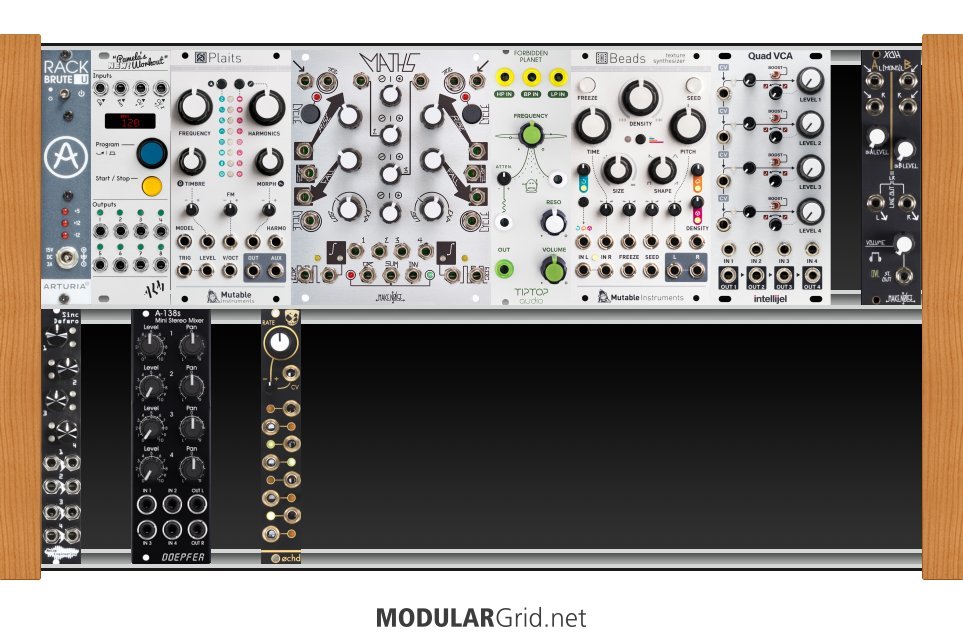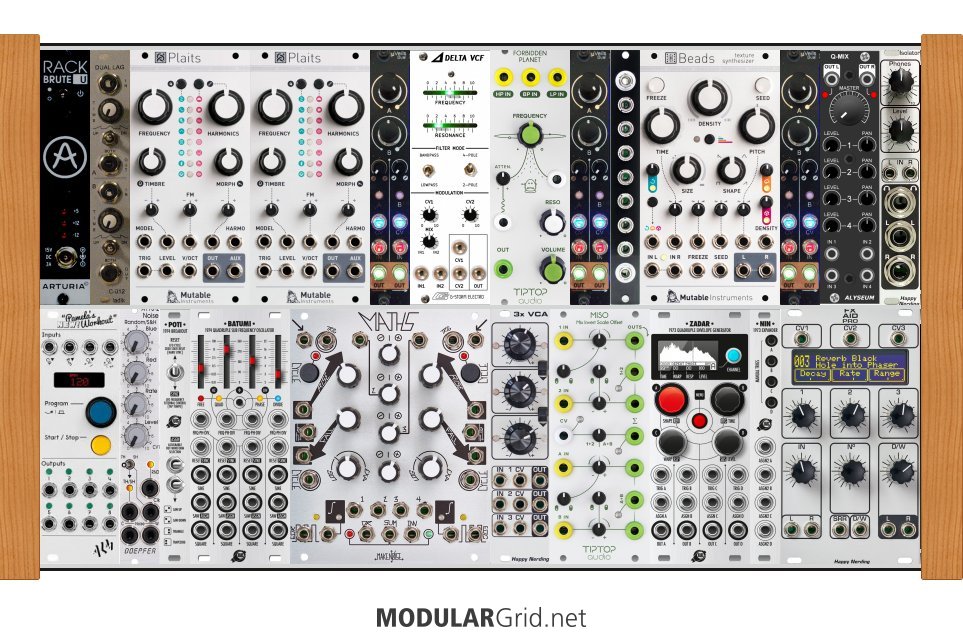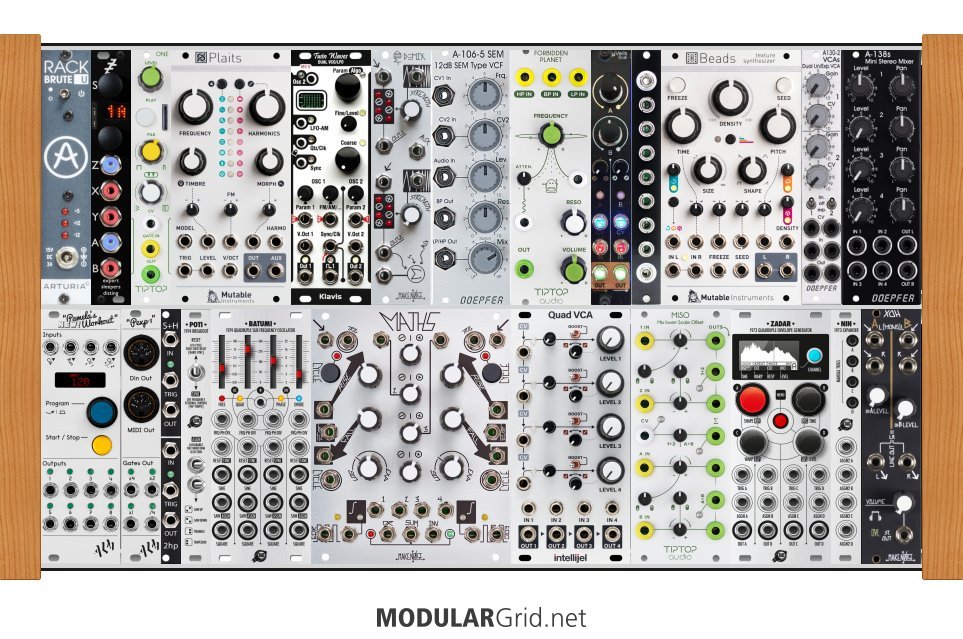So, first batch is in the system (top row) and been using it a lot...i'm hooked!
I common patch looks something like this:
Pams to generate the pitch with different techniques, random from single channel or multiple ones mixed together with logic conditions. This then goes to the pitch of Plaits. Other channels on Pams control the inputs of Plaits either straight in or via Maths. Maths usually helps with this too, but more often I use it to control the filter and VCA. Out from Plaits into Filter and then VCA and out. Beads have not arrived yet..
It's all fun and game, but I feel it's lacking some thing.
Now to the planned new things, row 2:
I use Maths 2-3 for attenuation, but want to free that space up, therefor planning to add a dedicated attenuator in form of Sinc Defero.
I don't find it satisfying to put in LFOs in Pams all the time (usually start using the two in Maths first) and want something more direct, therefor looking at the ochd. Good choice or should I look for something with more exact control?
Lastly the mixer, since I use it alot in Maths and feel like a dedicated one is worth having. Going stero to be used with Beads, but is that overkill? I want to mix both audio and CV, should I get two different mixers?
Three more utility and modulation focused modules, but want to here some suggestion what you would add as a next step? A sequencer? Random generator? More sounds sources?




